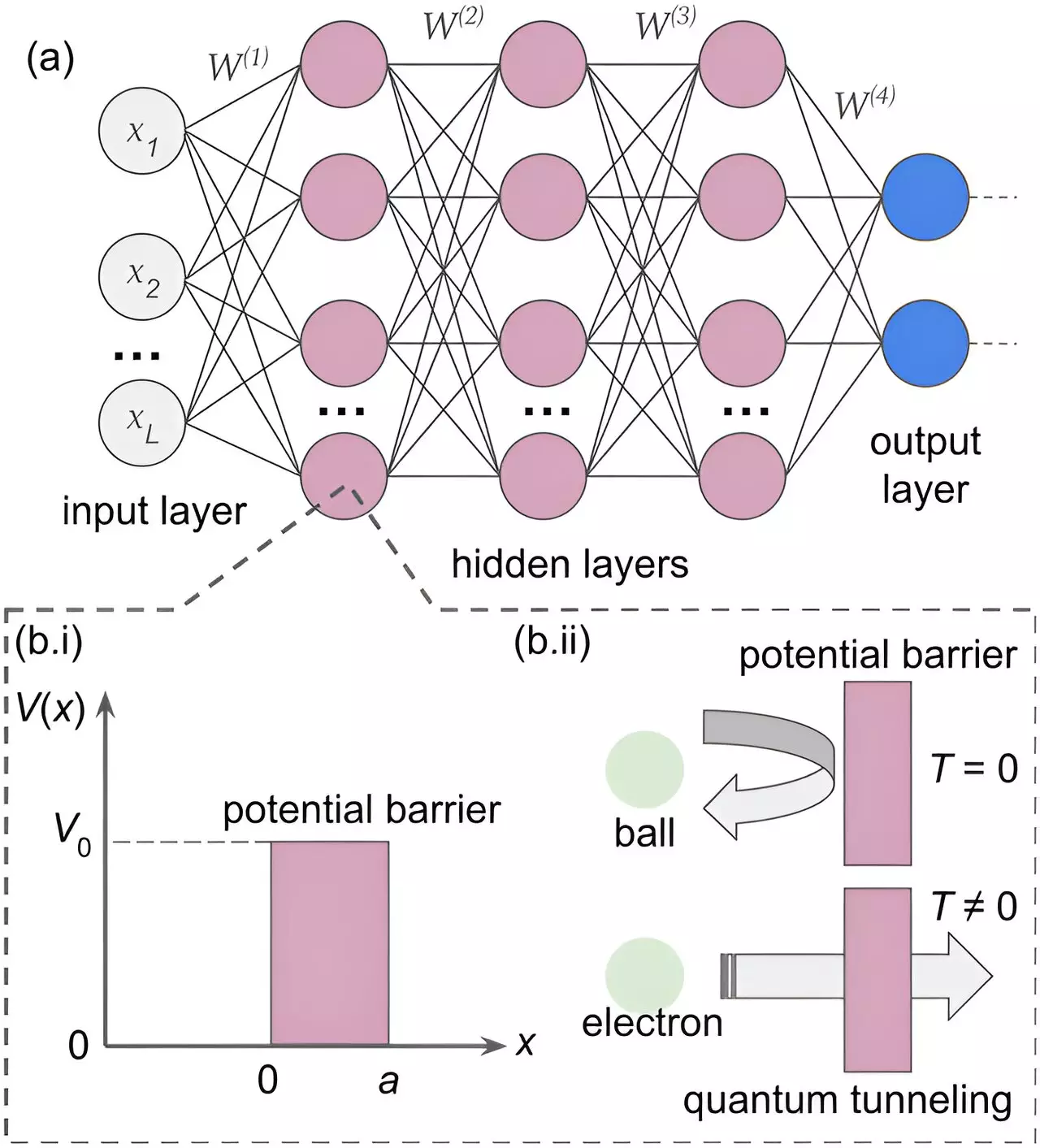The realms of optical illusions, quantum mechanics, and neural networks may appear as distant universes to the untrained eye. However, recent research findings have shown a surprising interplay between these seemingly disparate fields. In a groundbreaking study published in APL Machine Learning, a neural network was engineered using the concept of “quantum tunneling” to mimic human perception of optical illusions like the Necker cube and Rubin’s vase. This innovative approach outperformed conventional computer vision models and raised profound questions about the potential convergence of artificial intelligence and human cognition.
Optical illusions serve as captivating challenges for the human brain, presenting visual stimuli that defy traditional understanding. While these illusions manipulate our perception, they also offer valuable insights into the inner workings of our cognitive processes. Exploring optical illusions through AI reveals intriguing complexities. Although modern computer vision systems demonstrate proficiency in recognizing complex objects, deciphering optical illusions remains a formidable task. The integration of quantum physics into neural networks introduces a revolutionary perspective, shedding light on the intricate mechanisms underlying human vision and cognition.
At the core of this innovative research lies the concept of quantum tunneling, a phenomenon derived from quantum mechanics. Analogous to the behavior of subatomic particles, quantum tunneling in neural networks enables artificial neurons to circumvent conventional barriers and activate in unexpected ways. The incorporation of quantum effects into neural network architecture marks a paradigm shift in the field of AI, challenging traditional models of information processing and decision-making. By harnessing the principles of quantum mechanics, researchers aim to unveil the mysteries of human perception and behavior that elude classical explanations.
Quantum Insights: Bridging Gaps in Understanding Human Cognition
The adoption of quantum mechanics in cognitive science represents a bold attempt to address the gaps in conventional theories of human cognition. As quantum effects offer a novel framework for modeling complex behaviors and decision-making processes, researchers seek to leverage quantum computational algorithms for enhanced efficiency and accuracy. By infusing neural networks with quantum properties, scientists delve into the realm of Schrödinger’s cat, where multiple interpretations coexist until observation collapses the wave function. This parallel between quantum superposition and cognitive ambiguity highlights the intricate parallels between quantum phenomena and human consciousness.
In an age permeated with misinformation and digital manipulation, understanding the mechanisms governing human perception and reality construction assumes paramount importance. Beyond unraveling the enigma of optical illusions, quantum-powered AI holds the key to comprehending social dynamics and radicalization phenomena in online platforms. As researchers continue to probe the frontiers of quantum cognition and neural network fusion, the prospect of conscious artificial beings looms on the horizon. The quest for intelligent machines endowed with self-awareness and decision-making capabilities unfolds, guided by the transformative potential of quantum-enhanced AI.
The convergence of optical illusions, quantum mechanics, and neural networks unveils a captivating narrative of innovation and exploration. By bridging disciplines and challenging preconceptions, researchers pave the way for a future where artificial intelligence transcends mere computation to embody the essence of human cognition. As the boundaries between science fiction and reality blur, the journey towards quantum-powered consciousness in machines heralds a new chapter in the evolution of technology and humanity.


Leave a Reply